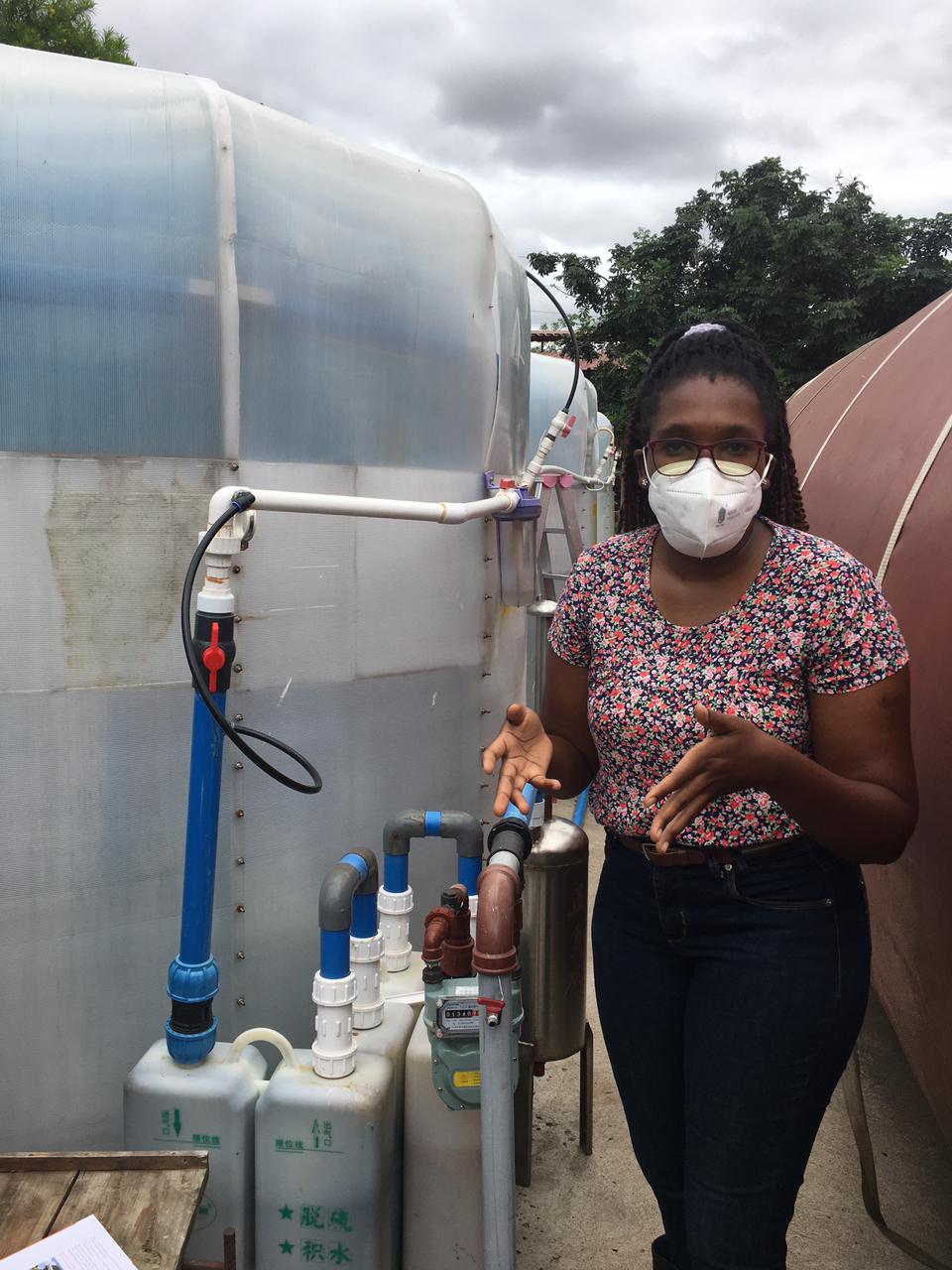
Engª Marta is a student who is developing her Master's work regarding the production and purification of biogas. "I am using the Mahubo plant as a medium for my experiment, and furthermore, my role at the Mahubo biogas plant since I have been there involves identifying possible anomalies that are taking place in the biogas production process”. In March, 2022, we had a conversation with Marta about the biodigester which will soon be complemented by a 50 kW solar photovoltaic system with support from UNIDO
What inspired you to be engaged in biogas systems?
The need to put to practice the theoretical knowledge gained during my training at UEM about biogas inspired me to get engaged in the designing and management of the Frangos de Mahubo biodigester. There are many biodigesters in the country but these do not function due to lack of people with the capacity to manage these biodigesters. There is need to disseminate the knowledge about biogas systems
Tell us about the Frangos de Mahubo biodigester
The Frangos de Mahubo Biogas plant has a capacity of 45 cubic metres and the raw materials used include chicken manure mixed with water from the toilets and blood from the slaughterhouse as the mixture for the substrate. Each day the biodigester is fed with 1.39 m3 of substrate with a retention period of 30 days. It is designed to produce 38 m3 of biogas daily.
Should biogas be consumed in the place where its produced or transmitted for consumption to other places?
Unfortunately, the major challenge with biogas production is in storage. It is not economically feasible to produce it in one place and transport it to another, this is very expensive. Thus, the ideal thing is to produce and consume it locally.
What recommendation do you have for the effective utilization of biomass?
Biomass can be used to produce energy, and can be a kick-start for energy decentralisation in various regions of the country, but first it is necessary to determine the energy needs of each area. It may be economically viable to start with small-scale biodigesters that can meet the needs of household kitchens.
What are the advantages of biogas?
There are many advantages of this technology. Firstly, raw materials are easily accessible in communities due to the availability of animal and agricultural waste. Pigs and cows, for example, are a good source of waste for biogas production, with sufficient resources and production capacity, where villages can benefit from the energy generated. Furthermore, the adoption of the technology eliminates the dependence on wood among communities, thus preserving the environment. It should be emphasised that in addition to biogas, the biodigestion process also produces biofertiliser that can be used in gardens and crops for irrigation or as fertiliser because it contains a high concentration of nutrients
Is capacity building necessary in the management of biogas plants?
Generally there is a lack of knowledge about biogas, despite the existence of huge agricultural and animal waste in the country. There are some biodigesters in the country, but they are not being used due to lack of knowledge and people with the necessary skills and minimum training to manage them. Strengthening the management capacity of biogas plants depends on the capacity of the biodigester. For example, managing a 5-10 m3 biogas plant does not require too much technical detail. There is a need to train people who deal with a biodigester, to know the quality of the raw materials needed for the biodigester and to calculate the amount of material to put into the process. One has to have the ability to assess whether there may be any factors in the biogas production process that may affect the functioning of the biodigester, for example, the pH, temperature and alkalinity. There is also a need to adjust the pH of the substrate and this can be done with some materials like calcium carbonate or local material like ash. The person in the management of the system needs to be equipped with knowledge about the need to purify the biogas produced according to its applicability. For example, if the biogas is used for cooking, there is a need to remove hydrogen sulphide (H2S) as it holds corrosive effect, can damage pipes, iron equipment, and produces a bad smell like rotten egg, causing nausea and intoxication.

